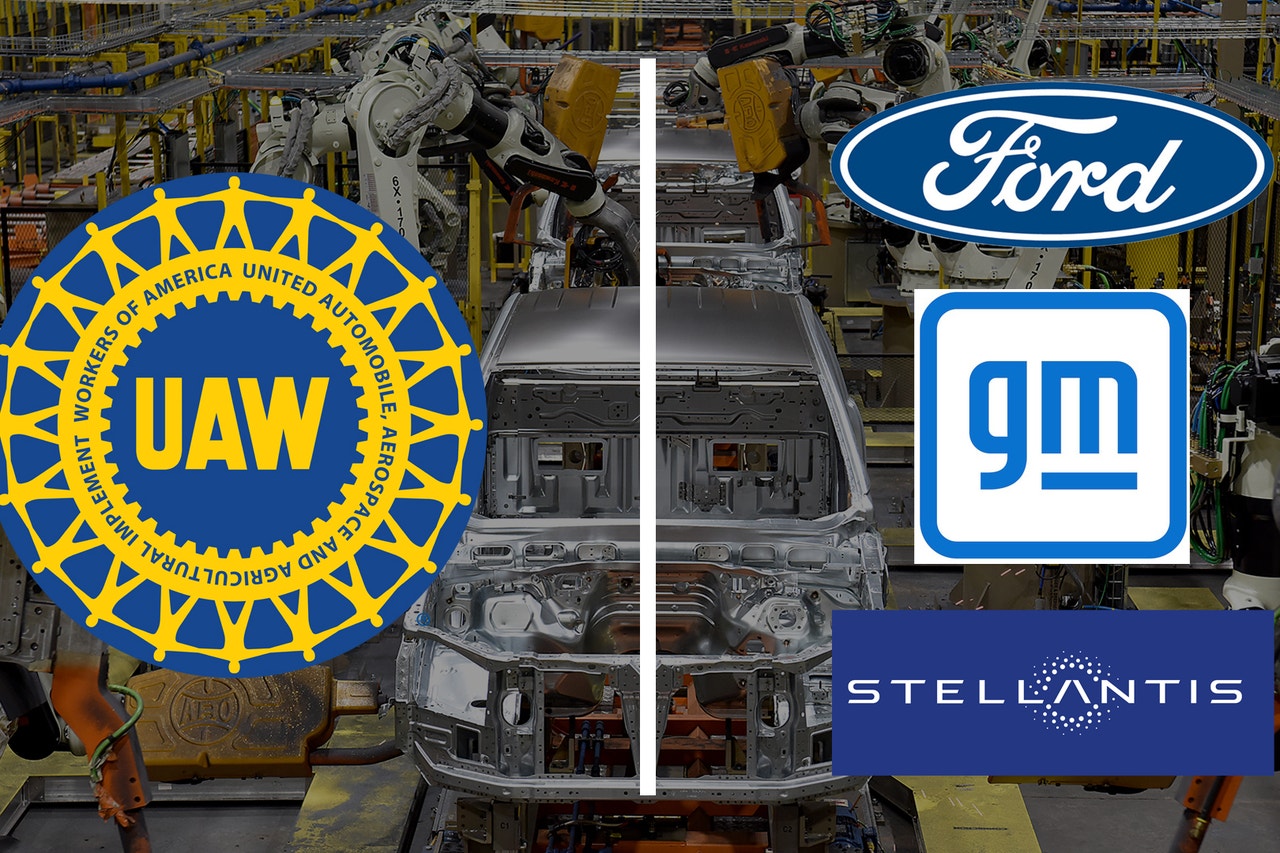- At midnight on September 14, the UAW went on strike at GM, Ford, and Stellantis factories.
- Negotiations for cost-of-living adjustments, pay raises, and more fell through, leading to the strike.
- President Biden has voiced his support for the union, urging both parties back to the negotiating table.
United Auto Workers Union Strikes At GM, Stellantis, And Ford
UAW workers went on strike at midnight on Sept. 14 after negotiations fell through.
The United Auto Workers union went on strike Friday, the first time in the union’s history that it has struck against the Big Three automakers at the same time. Of the UAW’s roughly 146,000 active members, 12,700 are striking after negotiations with Ford, Stellantis, and GM fell through. The strike's main focus is additional pay and the return of traditional pensions.
The nearly 13,000 striking workers are located at some of the Big Three’s largest and most profitable plants. GM’s plant in Wentzville, Missouri, produces the GMC Canyon and Chevrolet Colorado midsize trucks — both newly redesigned — as well as the GMC Savana and Chevrolet Express cargo vans. The workers at Ford's plant in Wayne, Michigan, are also on strike, which will affect Bronco and Ranger production. It is worth noting that only workers in paint and final assembly will be on strike here. Finally, Stellantis’ Toledo, Ohio, plant that produces the Jeep Wrangler and Gladiator is also affected by striking workers.
The strikes at Big Three plants will affect the market, with the ramifications for customers and automakers growing larger as the strike goes on. Consumers should expect that due to reduced supply of the produced at the above plants, prices could rise in turn. UAW President Shawn Fain says targeted strikes focus on critical plants that can cause other plants to cease production due to a lack of parts. In other words, more models could eventually be affected because of where the strikes are happening.
Fain says that automakers must meet the UAW’s demands. “...if they don’t, we’ll keep amping it up.” Fain and the union have focused on a number of proposals, which officials say the Big Three have not met in negotiations. These demands include 40% hourly pay increases, a shorter 32-hour workweek, traditional pensions across the board, retiree health care (UAW workers hired after 2007 don’t get retiree health care or traditional pensions but a 401[k]), the return of cost-of-living adjustments (COLA) and more. Counteroffers from automakers included wage increases hovering around 20%, COLA, and adjusted profit-sharing bonuses.
High pay of major executives at automakers is also a large focus of the UAW strike effort. "The Big Three CEOs saw their pay increase by 40% over the last four years, while our pay only went up by 6%," Fain said. CEO Jim Farley was paid $20,996,146 in 2022 according to SEC filings from the automaker. The median compensation at Ford, per the Detroit Free Press, is $74,691 annually. GM CEO Mary Barra said that she was “frustrated and disappointed” by the union’s decision to strike. Barra is the highest-paid chief executive among the Big Three, with NPR reporting she made nearly $29 million in 2022, approximately 362 times more than the median GM employee.
This afternoon, President Biden addressed the public regarding the strike and ongoing negotiations. The president said that “because of the extraordinary skill and sacrifices of UAW workers” automakers have seen record profits over the last several years. Ford claimed adjusted earnings before interest and taxes of $10.4 billion in 2022, while GM claimed EBIT-adjusted earnings of $14.5 billion. The Detroit News reported Stellantis made $17.9 billion in net profits in 2022.
The president went on to say that “those record profits have not been shared fairly, in my view” and urged both parties to return to the table to work to come to a solution that benefits them both. The UAW negotiates with each automaker separately, not as a collective.
Edmunds says
The strikes will undoubtedly hurt automakers more than anyone else, but we won’t be surprised if ongoing strikes result in a rise in prices for popular new vehicles.





 by
by